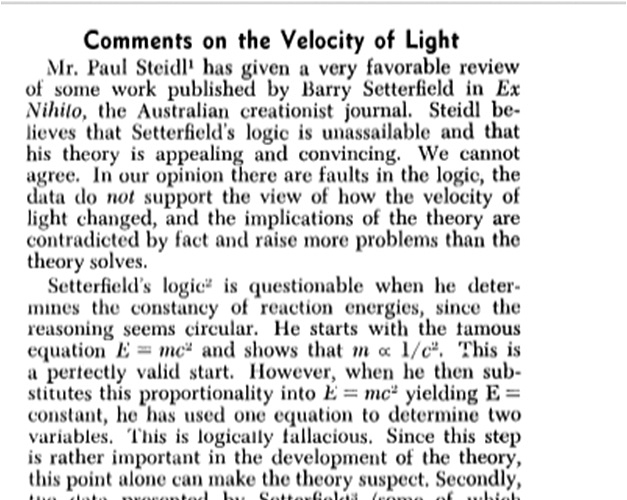I haven’t looked at that article in about 30 years. We did several things, take his measurements of various constants and back calculate what c would be. The values of lots of constants depend on c. Here is the article.
click on the pictures to make them bigger and thus readable. As I told one guy today, when I was a YEC I was no more comforting to them than I am to people here.


